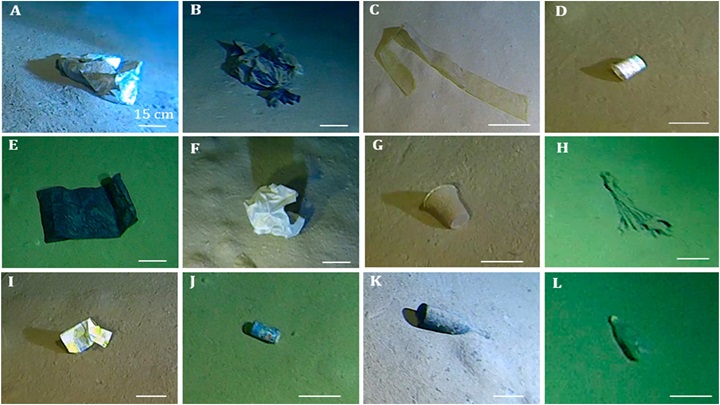The deepest point in the Mediterranean Sea is littered with literal trash, starkly highlighting how human activity is impacting every last nook and cranny of the natural world (and not in a positive way).
ADVERTISEMENT
In a new study, scientists boarded a sub-like contraption, called Limiting Factor, to survey the amount of marine litter at the bottom of Calypso Deep in the Mediterranean and counted a total of 167 items.
At least 148 of the objects were confirmed to be litter, while 19 were suspected but unconfirmed. Plastic accounted for most (88 percent) of the garbage, but there were also significant amounts of glass, metal, and paper. This included things like plastic bags, drink cans, glass bottles, plastic ropes, and plastic cups.
Based on the size of the area surveyed, the team estimated there could be up to 26,715 pieces of trash per square kilometer in the Calypso Deep, making it one of the highest concentrations of litter ever recorded in a deep-sea environment.
With a depth of approximately 5,122 meters (16,804 feet), Calypso Deep is the deepest point of the Mediterranean Basin, located in the Hellenic Trench of the Ionian Sea near the Greek coast. This natural depression is located in an area of active faults, making it prone to seismic shake-ups. This unique geological setting has created a fascinating deep-sea region with a flat bottom surrounded by steep slopes that extend for thousands of meters.
Along with the reckless behavior of humans, the shape and location of Calypso Deep help explain why so much trash has gathered there.
“It is a closed depression, which favours the accumulation of debris inside it. The weak currents in the trench […] also facilitate the deposition of light debris at the bottom,” Miquel Canals, study author and a professor at the University of Barcelona’s Faculty of Earth Sciences, said in a statement.

A collection of images showing the litter discovered during the recent expedition to Calypso Deep in the Med.
The trash in the Calypso Deep “comes from various sources, both terrestrial and marine. It could have arrived by various routes, including both long-distance transport by ocean currents and direct dumping. Some light waste, such as plastics, comes from the coast, from where it escapes to the Calypso Deep, just 60 kilometres [37 miles] away. Some plastics, such as bags, drift just above the bottom until they are partially or completely buried, or disintegrate into smaller fragments,” he said.
“We have also found evidence of the boats’ dumping of bags full of rubbish, as revealed by the pile-up of different types of waste followed by an almost rectilinear furrow,” Canals added.
The researchers hope their findings will serve as a wake-up call for policymakers, manufacturers, and the public to take decisive action on the world’s growing plastic plight. While a growing number of people are concerned about the problem, meaningful change has remained elusive.
“The Mediterranean is an enclosed sea, surrounded by humanity, with intense maritime traffic and widespread fishing activity. The evidence provided by our research should shake up global efforts, and in particular in the Mediterranean, to mitigate waste dumping, especially plastics, in the natural environment and ultimately in the sea, in line with the UN Global Plastics Treaty against plastic pollution, which is still pending approval,” said Canals.
ADVERTISEMENT
“The ocean floor is still largely unknown to society as a whole, which makes it difficult to raise social and political awareness about the conservation of these spaces”, the expert continues. “It is necessary to make a joint effort between scientists, communicators, journalists, the media, influencers and other people with social impact. The problem is there, and it has an enormous scope, even if it is not directly visible. We should not forget about it,” he concluded.
The study is published in the journal Marine Pollution Bulletin.
Source Link: Plastic Bags And Other Human Trash Found At Deepest Point Of Mediterranean Sea